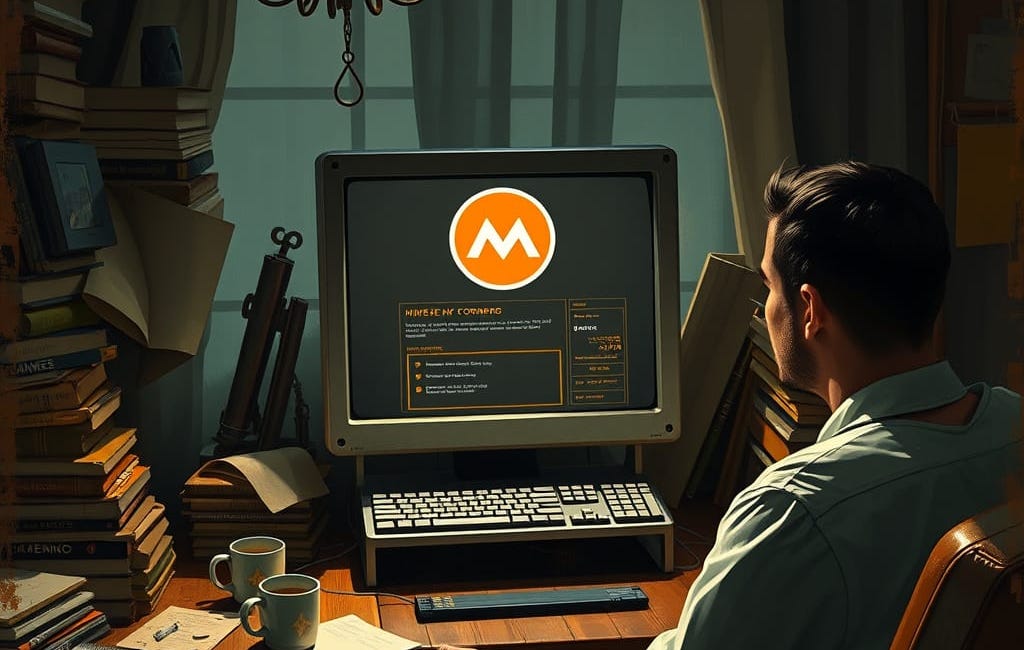How to Completely Reset Your Monero Node & Wallet
(Fresh Start Guide)
Introduction
If your Monero (XMR) node or wallet is acting up—whether due to sync issues, crashes, or just general instability—sometimes the best solution is a complete fresh start. This guide will walk you through:
✅ How to fully delete all Monero data
✅ Clean reinstallation (GUI & CLI options)
✅ Optimized sync settings for faster blockchain downloads
Whether you're troubleshooting or just want a fresh setup, this guide has you covered.
Why Start Fresh?
Common reasons for resetting your Monero node/wallet:
Sync failures (stuck at a block height)
Corrupted blockchain data
Wallet not displaying correct balance
Switching from remote node to local node
Preparing for a new Monero version
A clean install ensures no old files interfere with your new setup.
Step 1: Delete All Existing Monero Data
Before reinstalling, wipe all old files to prevent conflicts.
Terminal Commands (Linux/macOS)
bash
Copy
# Stop running Monero processes
sudo killall -9 monerod monero-wallet-gui 2>/dev/null
# Delete blockchain data
sudo rm -rf ~/.bitmonero/
# Delete wallet files
sudo rm -rf ~/Monero/
# Remove GUI configs
sudo rm -rf ~/.config/monero-gui/
# (Optional) Remove installed binaries
sudo rm -f /usr/local/bin/monerod /usr/local/bin/monero-wallet-guiWindows Users
Manually delete:
C:\ProgramData\bitmonero\(blockchain)C:\Users\<YourUsername>\Documents\Monero\(wallets)C:\Users\<YourUsername>\AppData\Roaming\monero-gui\(GUI config)
Step 2: Reinstall Monero (Choose GUI or CLI)
Option 1: GUI + Full Node (Recommended for Most Users)
Download the latest GUI bundle from getmonero.org
Extract & install:
bash
Copy
tar -xjvf monero-gui-linux-x64-v0.18.4.0.tar.bz2
sudo cp monero-gui-v0.18.4.0/monero-wallet-gui /usr/local/bin/
sudo cp monero-gui-v0.18.4.0/monerod /usr/local/bin/Launch the GUI:
bash
Copy
monero-wallet-guiSelect "Advanced Mode" → "Local Node"
Enable "Pruned Blockchain" (saves ~75% disk space)
Option 2: CLI-Only (For Advanced Users)
Download the CLI tools:
bash
Copy
wget https://downloads.getmonero.org/cli/linux64 -O monero-linux-x64-v0.18.4.0.tar.bz2Install & run:
bash
Copy
tar -xjvf monero-linux-x64-v0.18.4.0.tar.bz2
sudo cp monero-x86_64-linux-gnu-v0.18.4.0/monerod /usr/local/bin/
sudo cp monero-x86_64-linux-gnu-v0.18.4.0/monero-wallet-cli /usr/local/bin/Start syncing:
bash
Copy
monerod --data-dir=~/monero-blockchain --prune-blockchainOpen wallet:
bash
Copy
monero-wallet-cli --daemon-address=127.0.0.1:18081Step 3: Optimize Sync Speed
To speed up initial sync:
Add trusted peers (edit
~/.bitmonero/monerod.conf):ini
Copy
add-peer node.moneroworld.com:18080
add-peer selsta1.featherwallet.net:18080 Use
--max-concurrency(half your CPU cores):bash
Copy
monerod --max-concurrency=$(($(nproc --all)/2))Check sync status:
bash
Copy
tail -f ~/.bitmonero/monerod.log | grep "SYNC"Troubleshooting
❌ "Failed to bind IPv4" → Port 18080 is in use. Try:
bash
Copy
sudo ss -tulnp | grep 18080 # Find conflicting process
monerod --p2p-bind-port=18081 # Use alternate port❌ Segfaults/crashes → Reinstall dependencies:
bash
Copy
sudo apt install --reinstall libboost-all-dev libssl-devFinal Thoughts
A clean reset is often the fastest fix for persistent Monero issues. By:
Deleting all old data
Reinstalling fresh
Optimizing sync settings
…you’ll have a stable, efficient Monero node.
🔗 Further Reading:
Need help? Comment below or reach out on Monero Forum.
Would you like a video version of this guide? Let me know in the comments! 🚀
Monero GUI Wallet Setup:
Setting up your Monero (XMR) wallet for the first time? The official Monero GUI is a great choice, but syncing the blockchain can be slow—especially on older PCs.
Setting Up Monero GUI with an Umbrel Node:
Privacy is a fundamental right in the digital age, and Monero stands out as one of the leading privacy-focused cryptocurrencies. In this guide, I'll walk you through the process of setting up the official Monero GUI wallet on a Linux Mint machine and connecting it to a Monero node running on Umbrel on a Raspberry Pi within your local network.






